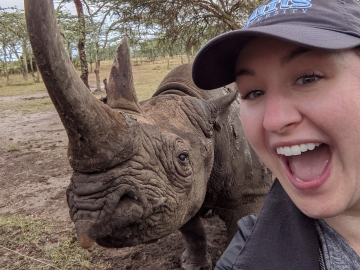ON THE EPIDIDYMIS AND SPERM FUNCTION: A LONG AND CONVOLUTED TUBULE PLAYING A CRITICAL ROLE IN BIOMEDICAL RESEARCH AND WILDLIFE CONSERVATION
The epididymis is a critical organ of the male reproductive system in most mammals; however, its functions are not fully described despite being necessary for physiological fertilization to occur. Sperm undergo a maturational process during epididymal transit where they gain the ability to be progressively motile and the ability to fertilize an oocyte in response to stimuli in the female reproductive tract, but the mechanisms underpinning these processes have not been completely elucidated. A more complete understanding of epididymal functions and the mechanisms that help to regulate these functions could lead to improved assisted reproductive technologies or identification of contraceptive targets for humans, laboratory and domestic animals, and wild species, which could have implications for both biomedical science and wildlife conservation. Here, we describe studies that: 1.) Identify a segment-specific population of vesicles in the murine epididymis that are enriched in the ganglioside, GM1, a glycosphingolipid known to play roles in capacitation and acrosome exocytosis and show that sperm become enriched in GM1 after in vivo exposure to these vesicles, indicating a function of this organ on a segmental level. 2.) Report differences in the localization of GM1 in the epididymides of multiple domestic and wild species, which show that epididymal structure and function are variable across species. 3.) Further elucidate the mechanism by which GM1 is able to regulate acrosome exocytosis in mature sperm. 4.) Investigate the role of epididymal extracellular vesicles (EVs) as a form of paracrine communication between epididymal epithelial cells that may help regulate the necessary microenvironments needed for proper sperm maturation to occur. 5.) Explore the effect of EVs derived from normospermic domestic cats on abnormal sperm from teratospermic cats, which has potential applications in the conservation of wild species. The results of this dissertation collectively represent significant advancements in our understanding of epididymal function and regulation across species, the downstream effects of epididymal processes on mature sperm physiology, and practical applications to improve sperm physiology.



